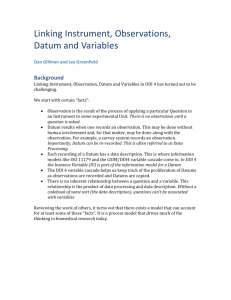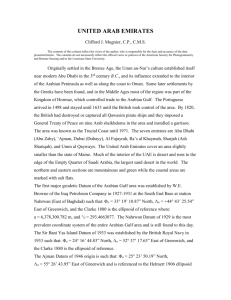view full paper
advertisement
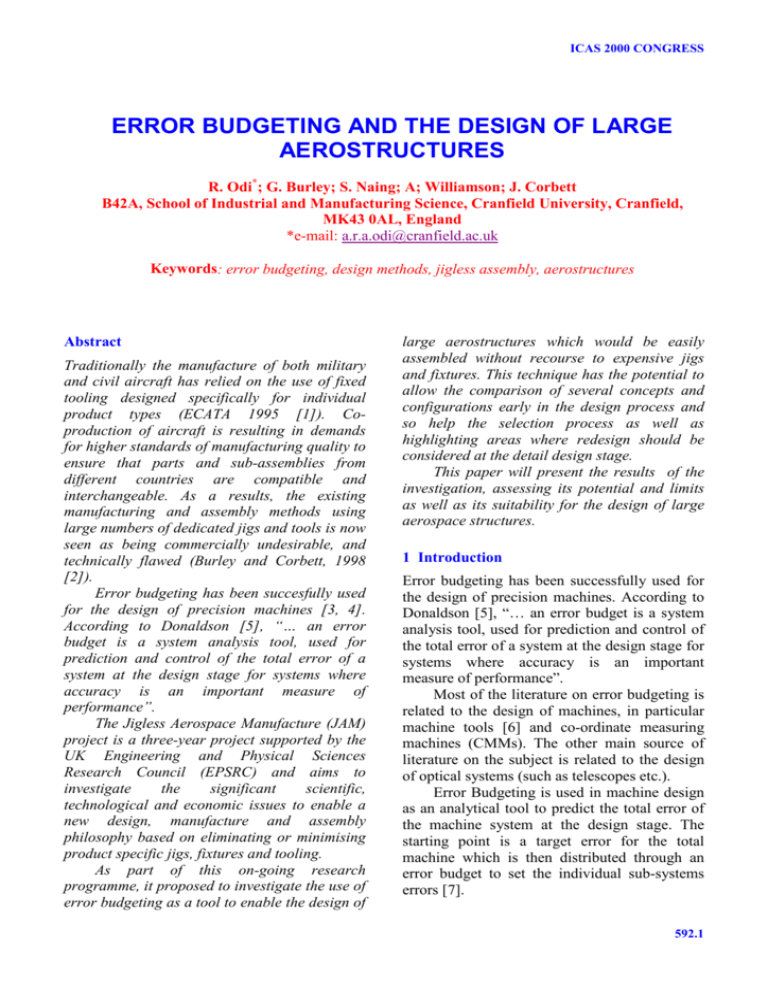
ICAS 2000 CONGRESS ERROR BUDGETING AND THE DESIGN OF LARGE AEROSTRUCTURES R. Odi*; G. Burley; S. Naing; A; Williamson; J. Corbett B42A, School of Industrial and Manufacturing Science, Cranfield University, Cranfield, MK43 0AL, England *e-mail: a.r.a.odi@cranfield.ac.uk Keywords: error budgeting, design methods, jigless assembly, aerostructures Abstract Traditionally the manufacture of both military and civil aircraft has relied on the use of fixed tooling designed specifically for individual product types (ECATA 1995 [1]). Coproduction of aircraft is resulting in demands for higher standards of manufacturing quality to ensure that parts and sub-assemblies from different countries are compatible and interchangeable. As a results, the existing manufacturing and assembly methods using large numbers of dedicated jigs and tools is now seen as being commercially undesirable, and technically flawed (Burley and Corbett, 1998 [2]). Error budgeting has been succesfully used for the design of precision machines [3, 4]. According to Donaldson [5], “… an error budget is a system analysis tool, used for prediction and control of the total error of a system at the design stage for systems where accuracy is an important measure of performance”. The Jigless Aerospace Manufacture (JAM) project is a three-year project supported by the UK Engineering and Physical Sciences Research Council (EPSRC) and aims to investigate the significant scientific, technological and economic issues to enable a new design, manufacture and assembly philosophy based on eliminating or minimising product specific jigs, fixtures and tooling. As part of this on-going research programme, it proposed to investigate the use of error budgeting as a tool to enable the design of large aerostructures which would be easily assembled without recourse to expensive jigs and fixtures. This technique has the potential to allow the comparison of several concepts and configurations early in the design process and so help the selection process as well as highlighting areas where redesign should be considered at the detail design stage. This paper will present the results of the investigation, assessing its potential and limits as well as its suitability for the design of large aerospace structures. 1 Introduction Error budgeting has been successfully used for the design of precision machines. According to Donaldson [5], “… an error budget is a system analysis tool, used for prediction and control of the total error of a system at the design stage for systems where accuracy is an important measure of performance”. Most of the literature on error budgeting is related to the design of machines, in particular machine tools [6] and co-ordinate measuring machines (CMMs). The other main source of literature on the subject is related to the design of optical systems (such as telescopes etc.). Error Budgeting is used in machine design as an analytical tool to predict the total error of the machine system at the design stage. The starting point is a target error for the total machine which is then distributed through an error budget to set the individual sub-systems errors [7]. 592.1 R. Odi, G. Burley, S. Naing, A. Williamson, J. Corbett The error budget is then used as a trade-off tool between the various sub-systems of the machine to achieve a balance between the target and the difficulties in achieving it. Error budgeting thus provides a systematic method to determine the degree of difficulty in achieving a particular total error target. Error budgets are used at all stages of the machine development process: conceptual design, detail design, planning, prototype development, build, series production etc. The main idea for the use of error budgets in the design of aero-structures is to categorise as errors any imperfections or variations on important features which are used to put together components into sub-assemblies and assemblies. This analytical technique relies on the concepts of key characteristics (KC) [8] and datum flow chains (DFC)[9] and featurised DFC. 2 Methodology The Error Budgeting technique rests on three main pillars: KC methodology, DFC and featurised DFC diagrams and the application of geometric dimensioning and tolerancing symbols and terminology. Three building blocks, which are at the centre of the technique, are presented briefly. Sub-Assembly Level PKC #1 Component Level PKC #1.1 A B PKC #1.2 SUB-ASSEMBLY AND COMPONENTS PKC #1 Total Thickness PKC #1.1 Part A Thickness PKC #1.2 Part B Thickness KC FLOWDOWN Figure 1 KC Flowdown Example 2.1 Key Characteristics As part of the design process, the integrated product team (IPT) or design build team (DBT) produces a series of important product features whose variation significantly affect the product function, form and quality10. These features are called key characteristics (KCs). Product KCs (PKCs) are the main KC category and they flow down through the system to component level. For the JAM project, once the product KCs have been identified, the means by which they are realised are divided into two KC categories: assembly KCs (AKCs) and manufacturing KCs (MKCs) for PKC realisation by assembly and manufacturing processes respectively. In the example shown in Figure 1, a twopart sub-assembly, the main PKC is the overall thickness of the joint. This flows down to two PKCs at the component level: the thickness of the two plates. For a given manufacturing strategy, a number of processes will be required to create the plate thickness. Those manufacturing processes, which significantly affect the realisation of the plate thickness, will be identified as MKCs. For a given assembly strategy, certain processes will significantly impact the realisation of the overall joint thickness: these processes become AKCs. Once the KCs have been identified, a clear strategy must be defined to determine how they will be realised. It is important that at the earliest opportunity attention is given to the way in which the product will be assembled. Datum flow chains (DFC) have been created to represent the underlying logic of an assembly at 592.2 ERROR BUDGETING AND THE DESIGN OF LARGE AEROSTRUCTURES an abstract level. As such they can be used to capture a product assembly strategy. 2.2 Datum Flow Chains The DFC diagrams are part of a new approach to conceptualise the design of complex assemblies. It is now being accepted that not all links between parts have the same importance when it comes to assembly. By differentiating those links which establish and transfer dimensional location between parts (mates) and those that are simply there for strength or support (contacts), it is possible to represent graphically the dimensional transfers for given assemblies. A datum flow chain is a directed acyclic graph representation of the assembly with nodes representing the parts and arcs representing dimensional relationships between them.9 The initial work of Mantripragada and coworkers has been extended by Schwemmin11 to incorporate the actual features that participate in the assembly of the product. This gave rise to the featurised DFC method which is intended to assess the assemblability of a given assembly concept via the inclusion of manufacturing process capability data. Schwemmin’s method is primarily geared towards existing products so that assembly problems can be traced and better understood. Hence the reliance on manufacturing process capability data. Furthermore, variations that are due to the rotation of parts are not accounted for by this method. Nevertheless, the featurised DFC method remains a useful and powerful tool for analysing assembly, using a language accessible to most engineers. Error budgeting as proposed in this document can be thought of as an adaptation of Schwemmin’s featurised DFC method. L2 L1 Feature 1 (F1) Feature 2 (F2) Part 2 Part 1 Part 1 DRF Features: A1, B1 and C1 L3 DRF = Datum Reference Frame Part 2 DRF Features: A2, B2 and C2 Figure 2 Typical featurised DFC diagram 2.3 Use of GD&T Symbols and Terminology The main similarity between error budgeting for assembly and Schwemmin’s methodology lies in the use of GD&T symbols and terminology and the use of the DFC diagrams, which are graphical representation of the underlying assembly concepts for a given product. The main difference is the way in which those symbols are used. Also, in error budgeting for assembly, design tolerances play a central part to enable the comparison at the earliest stage of given assembly concepts for a product. Figure 3 Geometric characteristics categories [12] There are five main categories of geometric characteristics that can be used in error budgeting to represent part feature variations: form, profile, orientation, runout and location controls. Form and profile controls are generally tied to individual features and do not make reference to datums. Orientation, runout and location controls require in general reference to datums. 592.3 R. Odi, G. Burley, S. Naing, A. Williamson, J. Corbett The method is explained in more detail in the following sections. 3 Error Budgeting for Assembly-Centric Design To use error budgeting to design assemblies, there is a need to define a few concepts. There is also a requirement to express the necessary adaptation to the method as used by machine tool and optical system designers. 3.1 Error in an Assembly For an assembly of parts, an error is defined as any variation from the idealised system. Essentially these variations from perfection will be captured by the application of tolerances to ensure the proper function of the assembled product. These variations will include tolerances (dimensional & geometric) but also changes in shape or form due to the environment (temperature, moisture etc.). 3.2 Transfer Error and Mate Error During the assembly of a product, a series of parts or fixtures are used in such a way that parts are positioned, secured and then fastened. The use of DFC and featurised DFC diagrams enable the designer to represent graphically the way parts, fixtures or jigs are used to realise the assembly. Due to the imperfect nature of these elements, the dimensional transfer will be subject to variation. If one considers only one source of variation, namely geometric, the errors that result from the assembly process can be classified into transfer and mate errors. Transfer errors are used to capture variations due to the dimensional transfers within the part and the imperfection of the datum features themselves. Thus transfer errors are a combination of datum form and profile tolerances and assembly feature orientation and location tolerances. If an assembly feature is also part of the part datum reference frame, then the feature orientation and location tolerances are no longer relevant. Transfer errors are applied to both the locating and located features. Mate errors are a combination of the dimensional, form, profile and runout tolerances of the assembly features that establishes and transfers dimensional location between the parts. These mate variations are due to the imperfections of the features themselves. Mate errors are related both to the locating and located features. The definitions of transfer and mate errors apply equally to fixtures and jigs. The definitions are summarised in the following table. Datum Feature Ordinary Feature Transfer Error - form tolerance, εf - profile tolerance, εp - orientation tolerance, e0 - location tolerance, el Mate Error - dimensional tolerance, ed - form tolerance, ef - profile tolerance, ep - runout tolerance, er For a given feature-to-feature link, the transfer error, Et, can be expressed as: Et = f (ε f , ε p , eo , el ) (1) The mate error, Em, is given by: Em = g (ed , e f , e p , er ) (2) The exact form of Equation 1 and Equation 2 will be ascertained in future work. They are likely to be root sum square (RSS) statistical additions because not all errors will be at their maximum. For a typical part-to-part assembly, such as that in Figure 2, the error concepts introduced above can be presented in a table as follows: 592.4 ERROR BUDGETING AND THE DESIGN OF LARGE AEROSTRUCTURES Link Error type Dat um L1 TRF A B C L2 MAT Fea ture F1 F1 F2 Form Profile Orientation FLT x x x STR x x x CIR x x x CYL x x x LPF x x x SPF x x x x x x x x x x x x x x x Runout PER PAR ANG x x x TRF = Transfer Error Location CRO TRO x x x x Dim ensi onal ± POS SYM CON x x x DIM x x MAT = Mate Error Form Profile Orientation Runout Location FLT = Flatness STR = Straightness CIR = Circularity CYL = Cylindricity LPF = Line Profile SPF = Surface Profile PER = Perpendicularity PAR = Parallellism ANG = Angularity CRO = Circular Runout TRO = Total Runout POS = Position SYM = Symmetry CON = Concentricity Table 2 Odinary feature error equations Assuming RSS summation, the transfer error (Equation 1) can be written as: Et = ε 2f + ε p2 + eo2 + el2 (3) Similarly, the mate error (Equation 2) is given by: Em = ed2 + e 2f + e 2p + er2 Error due to Equations form (eFLT )2 + (eSTR )2 ef = 2 2 + (eCIR ) + (eCYL ) 2 2 profile e p = (eLPF ) + (eSPF ) runout er = (eCRO )2 + (eTRO )2 (10) el = (e POS )2 + (eSYM )2 2 + (eCON ) (11) N ∑ (e ) i =1 (12) 2 DIM i N is number of toleranced dimensions Equations εf = (ε FLT )2 + (ε STR )2 2 2 + (ε CIR ) + (ε CYL ) For N number of features, the combined error, eN, can be expressed as: (5) eN = Equation 5 Profile (9) ef = Table 1 Datum feature error equations Error due to Form eo = location dimension (8) (e PER )2 + (ePAR )2 2 + (e ANG ) orientation (4) It is important to note that not every tolerance type will be present for a given feature. Also the error due to a particular geometric characteristic will be a summation of different types of tolerances within that group. For example, errors due to form variation may include any combination of flatness, straightness, circularity and cylindricity tolerances. (7) εp = (ε LPF )2 + (ε SPF )2 (6) ∑ (e N i =1 ) 2 feature i (13) The initial total error for an assembly is given by: ΕA = ∑ (E ) 2 t Li + ∑ (E m )Lj 2 (14) i, j are DFC links 592.5 R. Odi, G. Burley, S. Naing, A. Williamson, J. Corbett These equations can be used to create an initial error budget that can be used to assess various assembly concepts. The aim of the design process is to find an assembly concept with an acceptable error and cost level. The larger the permitted error on each of the features, the cheaper the cost of manufacture. However this may result in fitting problems or in the impossibility of delivering a given KC. On the other hand, a reduction in error has some cost implications. So the whole design team can start making some trade-offs based on the error budget. It is worth noting that if a part is overconstrained, it results in an increase of the total product error. This is consistent with the fact that over-constraint occurs when a number of features compete for the elimination of the same degrees of freedom. As such, they represent additional sources of variation. Once processes are better defined and the design progresses, the error budget can be refined further by resolving the errors along the main datum reference frame (DRF) axes of the assembly. An important part of the design process is the assignment of datums for various assemblies, sub-assemblies, components and tooling. This aspect of the design process is critical for the refinement of the error budget because it enables the rough orientation of the main components with respect to the product DRF. Each error source can then be assessed regarding its influence along the product DRF axes. 4 Example: Bulkhead Assembly The following example presents an error budget for a bulkhead assembly. Two bulkheads need to be put together using an assembly tool. The main requirement to satisfy is the alignment of the upper contours of the bulkhead with respect to the assembly reference frame. Figure 4 Bulkhead assembly [11] Figure 4 shows the bulkhead assembly where the two bulkheads BH1 and BH2 locate to the tool details. Figure 5 GD&T callouts of the assembly features [11] 592.6 ERROR BUDGETING AND THE DESIGN OF LARGE AEROSTRUCTURES The callouts in Figure 5 refers to the design intent (i.e. the values shown are tolerances not manufacturing process capability data). L13 L7 Loc1 Pln A BH1 Sur IML BH1 L8 L1 The Featurised DFC diagram is shown in Figure 6. The KC is delivered from secondary features in each of the bulkheads and it is shown in the picture. All the features and their callouts are listed in the following table. Loc1 Hol B L2 L9 Loc1 Slot C L3 Tool L4 KC Loc2 Pln A L10 L5 Loc2 Hol B L11 Loc2 Slot C BH2 Sur IML BH2 L6 L14 L12 Figure 6 Featurised DFC diagram for the proposed assembly concept [11] Table 3 Feature callouts Part Feature Tool Loc1 Pln A Loc1 Hol B Loc1 Slot C Loc2 Pln A Loc2 Hol B Loc2 Slot C Datum Pln A Datum Pln B Datum Pln C BH1 BH1 Pln A BH1 Hol B BH1 Hol C BH1 Sur IML BH2 BH2 Pln A BH2 Hol B BH2 Hol C BH2 Sur IML Callout SPF POS POS SPF POS POS FLT FLT FLT FLT PER POS SPF FLT PER POS SPF Callout Type Profile Location Location Profile Location Location Form Form Form Form Orientation Location Profile Form Orientation Location Profile Tolerance 0.010 0.005 0.005 0.010 0.005 0.005 0.005 0.005 0.005 0.005 0.005 0.005 0.020 0.005 0.005 0.005 0.020 592.7 R. Odi, G. Burley, S. Naing, A. Williamson, J. Corbett Table 4 Link-Feature Table Link Type Datum Feature Ordinary Feature L1 TRF Datum Pln A Datum Pln B Datum Pln C L2 TRF Datum Pln A Datum Pln B Datum Pln C L3 TRF Datum Pln A Datum Pln B Datum Pln C L4 TRF Datum Pln A Datum Pln B Datum Pln C L5 TRF Datum Pln A Datum Pln B Datum Pln C L6 TRF Datum Pln A Datum Pln B Datum Pln C L7 L8 L9 L10 L11 L12 MAT MAT MAT MAT MAT MAT L13 TRFKC* BH1 Pln A BH1 Hol B BH1 Hol C L14 TRFKC* BH2 Pln A BH2 Hol B BH2 Hol C Form Tolerance FLT Profile Tolerance SPF Location Tolerance POS Orientation Tolerance PER 0.005 0.005 0.005 Loc1 Pln A 0.005 0.005 0.005 Loc1 Hol B 0.005 0.005 0.005 0.005 Loc1 Slot C 0.005 0.005 0.005 0.005 Loc2 Pln A 0.005 0.005 0.005 Loc2 Hol B 0.005 0.005 0.005 0.005 Loc2 Slot C Loc1 Pln A Loc1 Hol B Loc1 Slot C Loc1 Pln A Loc1 Hol B Loc1 Slot C 0.005 0.010 0.010 0.005 BH1 Sur IML 0.020 0.005 BH2 Sur IML 0.020 * For transfer error links to feature that deliver directly a KC (such as L13 and L14 above) it is necessary to add any error due to the feature itself. This adjustment is termed a KC error adjustment. Table 5 Link Transfer Error Table Link Datum Features Form Profile Ordinary Features Location Orientatio n KC Error Adjustme nt Total Transfer Error (Et)Li L1 L2 L3 0.00866 0.00866 0.00866 0.0 0.005 0.005 0.0 0.0 0.0 0.00866 0.010 0.010 0.0 0.0 0.0 0.0 0.0 0.0 592.8 ERROR BUDGETING AND THE DESIGN OF LARGE AEROSTRUCTURES L4 L5 L6 L13 L14 Datum Features Ordinary Features 0.00866 0.00866 0.00866 0.005 0.005 0.0 0.005 0.005 0.0 0.0 0.0 0.0 0.0 0.0 0.0 0.0 0.0 0.0 0.0 0.0 0.0 0.0 0.0 0.020 0.020 0.00866 0.010 0.010 0.02061 0.02061 Table 6 Link Mate Error Table Link Ordinary Features Form Profile Total Mate Error (Em)Li L7 L8 L9 L10 L11 L12 0.0 0.0 0.0 0.0 0.0 0.0 0.010 0.0 0.0 0.010 0.0 0.0 0.010 0.0 0.0 0.010 0.0 0.0 Using equation 14 (which is an RSS summation of transfer and mate errors) and the data in Table 5 and Table 6, the total error budget of the assembly is 0.0274. The error budget for the KC delivery is 0.040. The difference between the two values comes from the L13 and L14 links, which are omitted from the error budget for the assembly. 5 Conclusion This paper detailed the work undertaken on the application of error budgeting to the design of aerostructures. Several concepts have been introduced that allow component variations to be accounted for in the assessment of assembly strategies. Work is being carried out to ascertain the best way to resolve the error component along assembly main DRF axes. Such refinements to the error budget will enable a better assessment of assemblies. The technique is has been applied to the JAM demonstrator current assembly process to provide a basis for comparison with the proposed alternatives to the current build process. Acknowledgement The authors would like to acknowledge the financial support of the UK Engineering and Physical Sciences Research Council and the main industrial partners BAE SYSTEMS (Military Aircraft & Aerostructures, Airbus UK and Sowerby Research Centre), Bombardier Shorts Aerospace and Comau UK Ltd References [1] ECATA. A Tooling Study to Reduce the Cost of Aircraft Manufacture, Multinational Team Project, Final Report, 1995. [2] Burley, G; Corbett, J. Flyaway Tooling for Higher Quality, More Cost-Effective Aerostructures, SAE Paper No. 98AMTC-59, SAE Aerospace Manufacture and Technology Conference, Seattle, June 1998. [3] Thompson, D C; McKeown, P A; “The Design of an Ultra-Precision CNC measuring Machine”, Annals of the CIRP, Vol. 38/1, 1989, pp. 501-504. [4] Thompson, D C; Fix, B L; “Comparison Between Predicted and Actual Accuracies for an UltraPrecision CNC Measuring Machine”; Proceedings 8th International Precision Engineering Seminar, Compiègne, France, 15-19 May 1998, 6 pp. [5] Donaldson, R R; Patterson, S R; “Design and Construction of a Large, Vertical Axis Diamond Turning Machine”, Proc. SPIE, Vol. 433, Aug. 1983, pp. 62-67. 592.9 R. Odi, G. Burley, S. Naing, A. Williamson, J. Corbett [6] Homan, B S; Thornton, A C; “Precision Machine Design Assistant: A Constraint-Based Tool for the Design and Evaluation of Precision Machine Tool Concepts”, Proceedings AIEDAM Spring ’98 Conference, 1998. [7] Wills-Moren, W J; “Error budgeting in machine design”, Lecture Notes, Cranfield University, Oct. 1993 –unpublished [8] Thornton, A C; “A mathematical framework for the Key Characteristics Concept”, Research in Engineering Design, 1999, pp. [9] Mantripangada, et al. “Assembly Orientated Design: A new approach to designing assemblies”, Proceedings 5th IFIP WG5.2 Workshop on Geometric Modelling in Computer-Aided Design, 18-23 May 1996, Airlie, VA USA. [10] Lee, D J; Thornton, A C; “Enhanced Key Characteristics Identification Methodology for Agile Design”, Agile Manufacturing Forum, March, 1996 Boston, MA. [11] Schwemmin, R J; “Predicting Assembly Performance with Featurized Datum Flow Chains”, Paper No. 1999-01-2271, SAE AMT Conference, 8-10 June 1999, Bellevue WA, USA. [12] Meadows, J D; “Geometric Dimensioning and Tolerancing”, Marcel Dekker Inc., New York, 1995., p. 56-57. 592.10

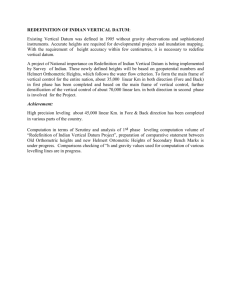
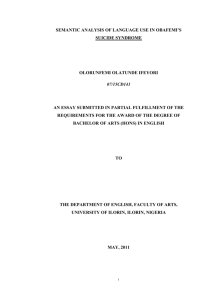
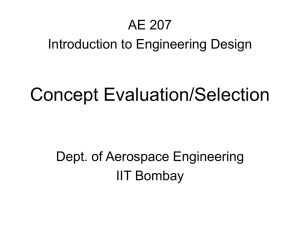
![Dr. Z's Math251 Handout #13.3 [Arc Length and Curvature] By](http://s3.studylib.net/store/data/008263836_1-3cdb80f6ec4c3c8afbcf7b46fe80eeff-300x300.png)
